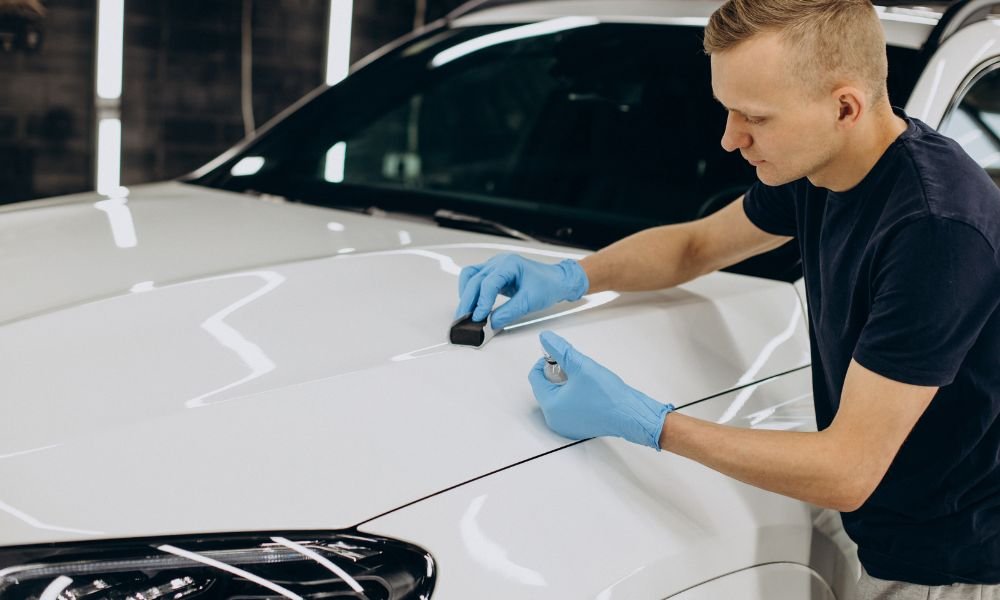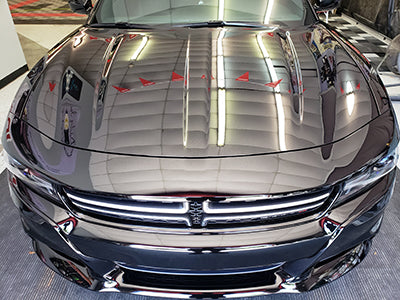Exploring Different Kinds Of Ceramic Coating for Numerous Lorry Finishes
Exploring Different Kinds Of Ceramic Coating for Numerous Lorry Finishes
Blog Article
Introduction Porcelain Coating: The Essential Guard Your Vehicle Deserves
In a period where maintaining the aesthetic and structural integrity of cars is critical, ceramic layer arises as an engaging option, supplying a durable protective shield unlike any other. As we check out the transformative influence of ceramic finishing on automobile conservation, one have to think about the nuanced benefits this development supplies over conventional methods.
Understanding Porcelain Coating
Worldwide of auto enhancement, something that constantly ignites the interest of automobile enthusiasts and professionals alike is ceramic finishing. At its core, ceramic covering is a fluid polymer put on the outside of a vehicle, developing a chemical bond with the vehicle's manufacturing facility paint. This safety layer, mainly made up of silicon dioxide (SiO2), is engineered to provide a resilient guard against ecological impurities.
The application process is meticulous, needing a dust-free and clean environment to guarantee optimum bond and uniformity. This finish forms a semi-permanent bond with the lorry's paint, which indicates it does not wash away or break down like standard waxes or sealants, though it may need reapplication in time due to ecological wear.
Ceramic coverings supply a high degree of hardness which adds to its longevity, making it a favored option for those seeking lasting defense for their lorries. The layer is transparent, enhancing the all-natural gloss and deepness of the paint, thereby preserving the vehicle's visual allure. It is essential, however, to recognize that while ceramic finishes give a durable surface area layer, they are not unsusceptible all physical damage, such as deep scrapes or damages.
Benefits of Ceramic Finishing
Toughness is a characteristic of ceramic finishing, offering automobile owners a substantial benefit by substantially boosting the longevity of their automobile's exterior. This innovative safety layer creates a robust shield against ecological hazards such as UV rays, oxidation, and chemical impurities. By developing a semi-permanent bond on the vehicle's surface, ceramic coatings endure the rigors of daily exposure to the components, therefore preserving the paintwork's honesty and vibrancy for an extensive period.
Additionally, the hydrophobic nature of ceramic finishings is an additional substantial benefit, as it properly repels water and prevents the build-up of dirt and crud. This residential property not only keeps the lorry cleaner for longer periods but likewise streamlines the upkeep routine, reducing the regularity and effort required for cleaning. The glossy surface of the finishing lessens friction, guaranteeing that contaminants glide off quickly without complying with the paint.
On top of that, ceramic finishes boost the visual allure of lorries by boosting the gloss and depth of the paint. This creates a visually striking coating that can equal the appearance of a newly waxed car, without the need for constant reapplication. Overall, ceramic coverings offer a blend of protection, convenience of upkeep, and superior aesthetic appeals, making them a very useful financial investment for car owners.
Application Process Explained
Comprehending the process of using ceramic finish is crucial for attaining the protective and aesthetic advantages previously talked about. The application procedure, while simple, requires learn the facts here now careful interest to detail to ensure optimal results. The vehicle needs to go through a complete cleansing procedure to get rid of dirt, grime, and any kind of existing wax or sealers. This action is important as it makes certain the layer can correctly bond to the car's surface.
Following, the surface is clayed to remove any type view it now of embedded impurities that washing may not eliminate. Following this, a paint adjustment procedure may be essential to resolve any scratches or imperfections, as ceramic layer can magnify existing defects instead than hide them. Once the surface is beautiful and ready, the ceramic finishing is used in tiny, workable areas using an applicator pad.

Contrasting to Conventional Wax
When examining ceramic coatings and conventional wax, one must consider the distinctive advantages each deals for automobile security. Standard wax has long been valued for its capacity to enhance a cars and truck's shine and use a basic layer of security against components like UV rays and small scratches. It is reasonably easy to use and can be a cost-effective option for those seeking short-term security. Wax provides a deep, shiny surface that lots of automobile lovers appreciate, making it a preferred choice for improving visual charm.
Nevertheless, ceramic coverings supply a more sophisticated kind of security. Unlike wax, which generally needs reapplication every couple of months, ceramic finishings can last several years with correct care, offering long-lasting protection and minimizing upkeep initiatives.
Essentially, while conventional waxes supply a cost-efficient way to attain short-term gloss and protection, ceramic finishes supply a more sturdy, resistant shield, making certain a vehicle's structural and aesthetic stability gradually.
Maintaining Your Ceramic Layer
Maintaining a ceramic layer requires a conscious strategy to guarantee its durability and performance. Unlike traditional wax, a ceramic finish supplies a sturdy layer of security, but it requires suitable treatment to maintain discover this its integrity. Normal cleaning with a pH-balanced hair shampoo is necessary to stop impurities from endangering the finish. Avoid utilizing unpleasant sponges or towels that might damage the surface, choosing instead for soft microfiber towels.

Car parking in shaded or covered locations can aid safeguard the coating from prolonged UV exposure, preserving the automobile's look. By sticking to these upkeep methods, the ceramic coating can successfully give lasting defense and aesthetic appeal.
Final Thought
Ceramic finishing stands for a significant innovation in automotive care, using a durable safety layer that chemically bonds with lorry paint. Its benefits, including UV resistance, oxidation prevention, and hydrophobic buildings, substantially surpass those of conventional wax. The semi-permanent nature of ceramic finish ensures durable relieve and gloss of upkeep, boosting both the appearance and longevity of automobiles. Adoption of ceramic finishing is a prudent option for those seeking to enhance and protect the visual and architectural integrity of their automobiles.
At its core, ceramic finish is a liquid polymer used to the outside of a vehicle, developing a chemical bond with the car's manufacturing facility paint.Ceramic finishings use a high level of firmness which adds to its sturdiness, making it a preferred option for those seeking long-term defense for their automobiles.Toughness is a hallmark of ceramic finishing, supplying car proprietors a tangible benefit by dramatically improving the longevity of their lorry's exterior. In general, ceramic finishings provide a mix of security, convenience of maintenance, and superior visual appeals, making them a vital financial investment for vehicle owners.
When examining ceramic coatings and standard wax, one must think about the distinct advantages each deals for car protection.
Report this page